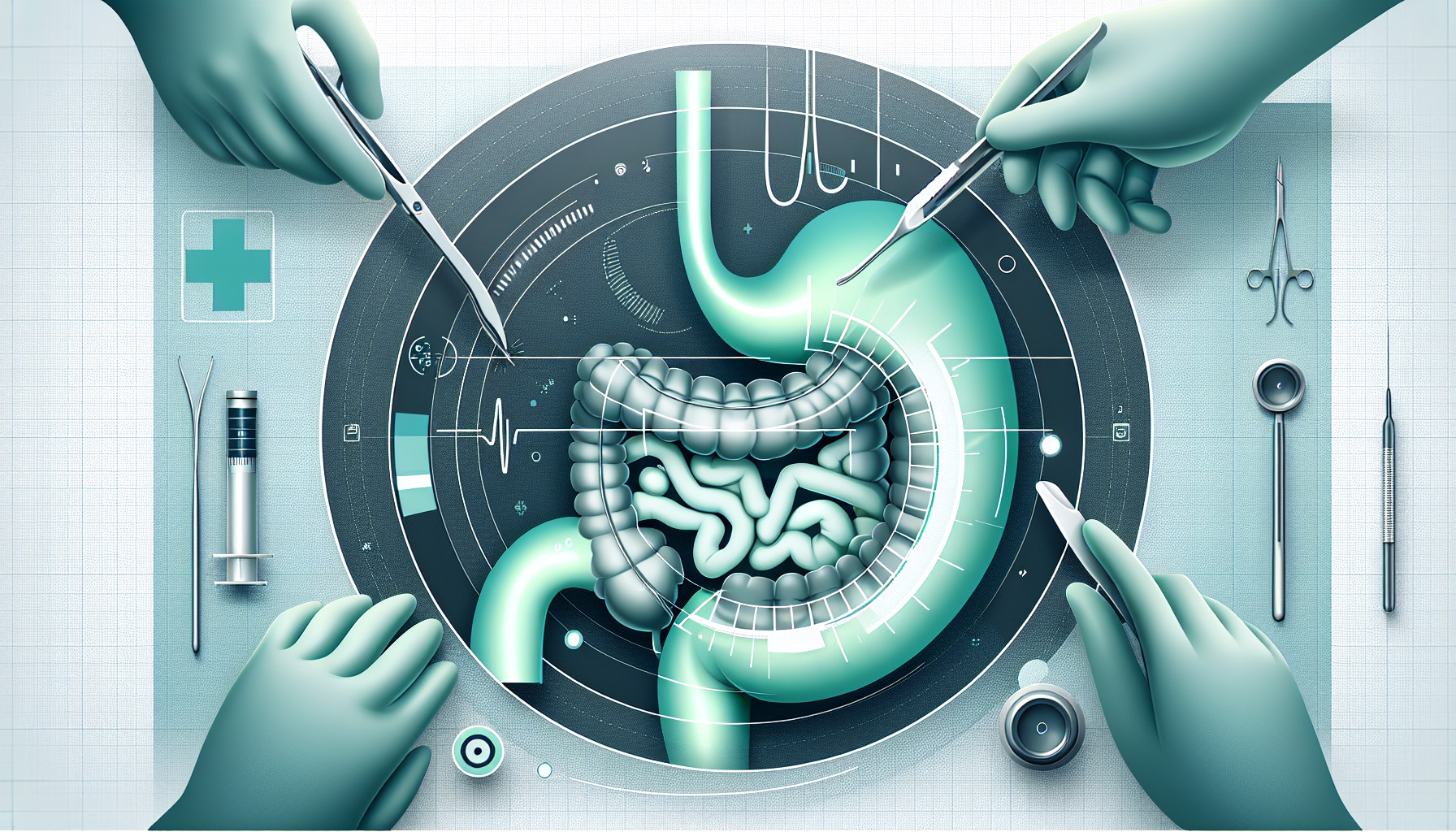Our Summary
This research paper discusses a type of weight loss surgery called Laparoscopic Roux-en-Y gastric bypass (LRYGB), which is often considered the best method for this type of surgery. However, a potential risk of this surgery is the development of an internal hernia, which can be a big concern for both patients and surgeons. The study aims to outline the techniques used to prevent internal hernias after this surgery, what was found during the operation, and how patients who developed an internal hernia after LRYGB were managed.
The video linked in the study offers helpful techniques for treating patients who may have developed an internal hernia after LRYGB, including how to unblock the small intestine and effectively close up the gaps in the membrane that holds the intestines (mesenteric defects) to prevent hernias.
The paper emphasizes the need for careful review of patients’ CT scans by a highly experienced surgeon to ensure that no cases of internal hernia are overlooked. If a patient has developed an internal hernia, the best approach is to stand on the patient’s left side, keep the left arm tucked, and start at the ileocecal valve (where the small and large intestines meet) and work backwards towards the ligament of Treitz (a part of the small intestine). In some cases, if the hernia is causing a blockage in the bowel, a gastrostomy (an opening into the stomach) may need to be performed.
The study concludes by stating that it’s not uncommon for patients to experience recurrent abdominal pain after LRYGB. To avoid delays in diagnosing these issues, surgeons need to systematically close mesenteric defects, use diagnostic laparoscopy (a procedure that allows doctors to look at the abdominal organs), and be highly suspicious of potential complications.
FAQs
- What is Laparoscopic Roux-en-Y gastric bypass (LRYGB) and what are its potential risks?
- How can the risk of internal hernia after LRYGB be prevented?
- What is the recommended procedure for managing a patient with an internal hernia after LRYGB?
Doctor’s Tip
One helpful tip a doctor might tell a patient about gastric bypass is to be vigilant about any abdominal pain or discomfort after the surgery. It is important to have a high index of suspicion for potential internal hernias and to seek medical attention promptly if any symptoms arise. Additionally, following post-operative guidelines and attending regular follow-up appointments with a bariatric surgeon can help prevent and manage complications effectively.
Suitable For
Patients who are typically recommended for gastric bypass surgery are those who have a body mass index (BMI) of 40 or higher, or a BMI of 35 or higher with obesity-related health conditions such as type 2 diabetes, high blood pressure, or sleep apnea. These patients have often tried and failed to lose weight through diet and exercise alone and are seeking a more permanent solution to their weight loss struggles. Additionally, patients who are committed to making significant lifestyle changes and are willing to adhere to a strict post-operative diet and exercise regimen are also good candidates for gastric bypass surgery.
Timeline
Before gastric bypass:
- Patient undergoes pre-operative evaluation, including consultation with bariatric surgeon, nutritionist, and psychologist.
- Patient participates in pre-operative weight loss program and education sessions.
- Patient undergoes pre-operative testing, such as blood work, imaging studies, and psychological evaluation.
- Patient follows pre-operative diet and lifestyle recommendations to prepare for surgery.
After gastric bypass:
- Patient undergoes laparoscopic Roux-en-Y gastric bypass surgery.
- Patient stays in the hospital for a few days for monitoring and recovery.
- Patient follows post-operative diet plan, including liquid and soft foods initially, then gradually transitioning to solid foods.
- Patient attends follow-up appointments with bariatric surgeon, nutritionist, and psychologist.
- Patient experiences weight loss and improvements in obesity-related health conditions.
- Patient may experience abdominal pain or other complications, such as internal hernia, which require further evaluation and management.
- Patient continues to make lifestyle changes, including regular exercise and healthy eating habits, to maintain weight loss and overall health.
What to Ask Your Doctor
- What is the risk of developing internal hernia after gastric bypass surgery?
- How will you prevent internal hernia during the surgery?
- What symptoms should I watch for that may indicate internal hernia after surgery?
- How will you diagnose internal hernia if it occurs?
- What is the treatment plan for internal hernia after gastric bypass surgery?
- How likely is it that I will need additional surgery for internal hernia in the future?
- What steps can I take to reduce my risk of developing internal hernia after surgery?
- What is the long-term prognosis for patients who have had internal hernia after gastric bypass surgery?
Reference
Authors: Nimeri AA, Maasher A, Al Shaban T, Salim E, Gamaleldin MM. Journal: Obes Surg. 2016 Sep;26(9):2255-2256. doi: 10.1007/s11695-016-2267-0. PMID: 27365147
